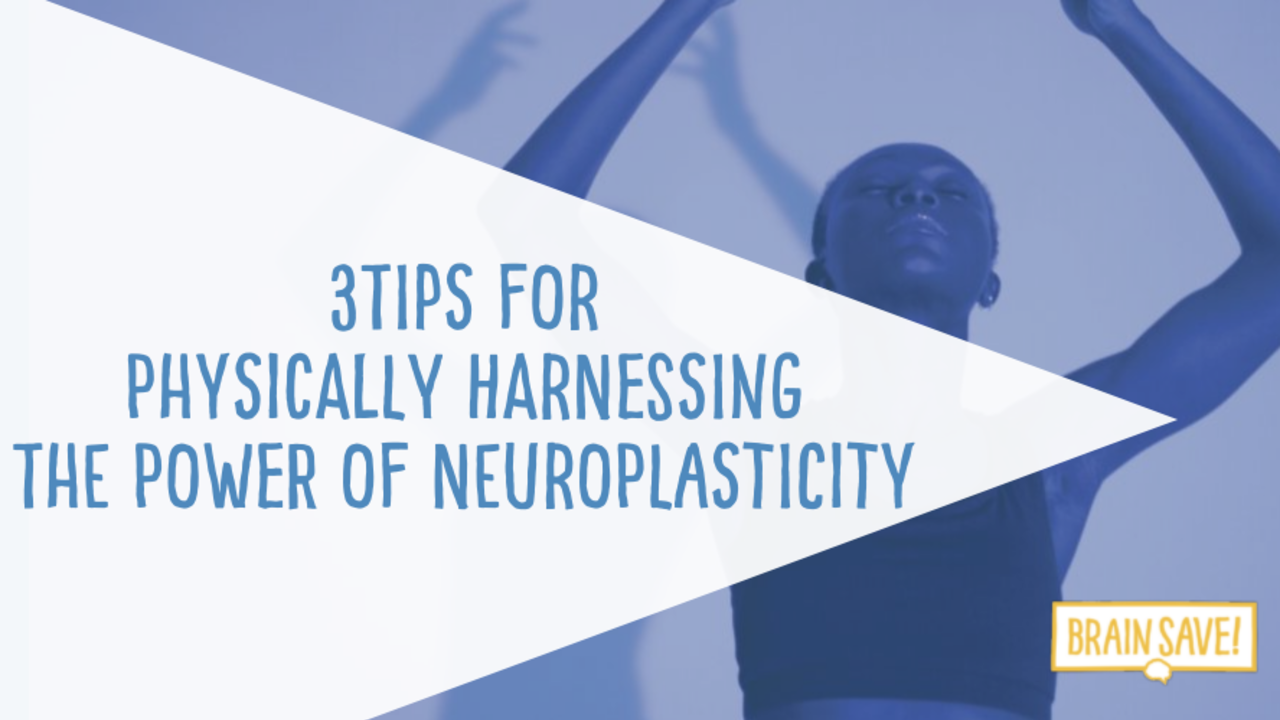Three Tips for Physically Harnessing the Power of Neuroplasticity

The big topic for this month has been neuroplasticity, and how to harness the power of it through your physical, chemical, and emotional brain. In my last article, I shared three tips that you could do to chemically harness the power of neuroplasticity.
Today I’ll be sharing with you three tips on how you can physically harness the power of neuroplasticity.
TIP #1: Physical Exercise
Tip number one is physical exercise. Physical exercise has been shown to increase the size and bulk of an area of your brain called the hippocampus. The hippocampus is important because not only does it help us navigate our physical world, but it also helps us deal with stress.
Many of you might be interested to know that the hippocampus is also very important for the consolidation of memory. So if you’re having cognitive decline, memory loss, or you find yourself walking into a room and forgot where you put your keys or even why you went into the room in the first place, then starting an exercise program to physically harness the power of neuroplasticity can be a really powerful step, no pun intended, in the right direction.
Research shows that something as simple as walking 30 minutes a day can significantly increase the size of your hippocampus.
So put on your walking shoes and go for a walk, today!
TIP #2: Dancing
The second tip I’m going to share with you is actually one of my favorite ways of harnessing neuroplasticity.
Now don’t get me wrong - I definitely enjoy walking, especially when the weather is sunny and the environment is beautiful like in nature or a new city I'm exploring. But I also enjoy spicing it up a bit. So dancing is my second tip for harnessing the power of neuroplasticity.
If you're having difficulty focusing or keeping your thoughts organized, or are looking for a way to boost your brain health naturally, then dancing is a fun, easy, and safe way to do so.
Research has shown that dancing activates key areas of your nervous system known as the frontal lobe, basal ganglia, and cerebellum. These neural networks are in charge of cognition, focus, concentration, along with physical activities such as balance and coordination.
If you suffer from chronic back pain or neck pain, dancing could be a fantastic way to not only exercise your heart and muscles but also your cerebellum, frontal lobe, and basal ganglia.
So turn up your radio and give your brain and body a little twist and shout!
TIP #3: Sleeping
Finally, the third way to physically harness the power of neuroplasticity is one of my other favorite activities– sleeping.
Research has shown that while you’re asleep, your brain integrates and processes everything that you have experienced or learned that day. So if you’re in school and you don't get good sleep, a lot of the information that you've learned that day won't stick. Or if you had a long and busy workday that was stressful and used up a lot of your brainpower, one of the most important things you can do to recover from your day is by getting a good night's sleep.
But good sleep isn't just for students or executives and office workers. If you're struggling with a concussion, or you have chronic pain, or are dealing with anxiety, and are getting treatments for it like seeing a chiropractor or a psychologist, or you're doing an immersive brain therapy program like the one we host at my clinic in California - if you don't get adequate rest in between those sessions, the same thing will happen. Your nervous system won't be able to integrate those treatments as deeply, and they won't be as effective– making your recovery take a lot longer than it would if you had gotten a good night's rest.
Another really important reason to get good sleep at night is to clear toxins from your brain. As you go through your day, moving about the world, thinking, engaging, feeling, and using your brainpower, your nervous system builds up toxins.
The great news is, research has also shown that when you sleep at night, you activate what's known as your glymphatic system and in doing so, you clear out the toxins that have accumulated in your brain.
One of the biggest risk factors that we've seen out there for the development of Alzheimer's is an accumulation of toxic plaques that can be caused by a lack of proper sleep.
So if you're reading this at night, stop, turn off your computer/smartphone, take a few deep breaths, stretch your body, and get to bed! Your brain will thank you for it ;)
So there you have it! Three ways you can physically harness the power of neuroplasticity: through physical exercise, dancing, and sleep.
Pretty simple (and fun!), right?
If you’ve enjoyed this article, please like it, comment on it and share it with one friend. I love hearing from you! And stay tuned, because in the next few articles, I’m going to be sharing ways you can harness the power of neuroplasticity through your mind and your emotions.
To Your Total Health,
Dr. Titus Chiu


